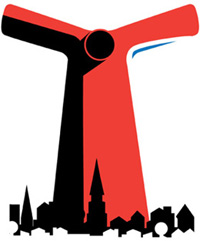A response to “Cruise Critics Miss Boat”: “Regulate cruise tourism in Charleston” by Jay Williams in P&C-

Regulate cruise tourism in Charleston, P&C, May 21, 2012, Commentary, JAY WILLIAMS.
It’s not about the past.
Those favoring unregulated cruise ship tourism for Charleston want to discuss everything but facts.
A recent article from two writers affiliated with the S.C. Waterfront Alliance resorted to a standard theme — they attacked their opponents. They charged the Historic Charleston Foundation with using “beyond bizarre accusations about Charleston’s maritime industry” and belittled residents of Ansonborough, calling their concerns about cruise ship noise and questions about height regulations on the 14-deck ships “laughable.” That was before these advocates advanced their own laughable assertion, “The cruise industry is an environmentally friendly, clean, and well-regulated industry.” Tell that to the survivors of the sunken Carnival-owned “Costa Concordia” or residents of Charleston breathing toxic bunker fuel from cruise ships — fuel so dirty it’s banned on land.
The proponents also reprised their straw man sham that some “organizations” desire to “regulate shipping.” Codswallop. Nobody wants to “regulate shipping.” Cargo ships don’t disgorge thousands of passengers onto downtown streets; cruise ships do. If other tourism is regulated, why not cruise tourism?
But the facts are not favorable to cruise boosters, so they emote about history, “neighborhoods built by ship captains” and “the founding of the Charlestown colony.” But the present and future are what matter.
The modern cruise industry began just 40 years ago when Carnival Cruise Lines began. Since then, Carnival has grown to 100 ships with a 2009 profit of $1.8 billion. Global cruise industry growth has doubled in the past decade — from 9.7 to 18.8 million passengers annually through 2010. Carnival’s revenues increased another 8 percent in 2011 and may grow 6 percent more this year.
The “Fantasy,” the ship home-ported in Charleston, carries 2,056 passengers, but it’s the oldest ship in Carnival’s fleet. Newer ships are bigger. The “Dream” — heralding Carnival’s newest class of vessels — is 1,004 feet long, carries 3,646 passengers and 1,367 crew. They are virtual cities — with bars, “shopping streets,” spas, casinos, upscale restaurants, kids’ activities, “meet and greet” clubs. If everything is on board, why spend money on land?
So they don’t. The recent Miley & Associates study shattered the illusion that home-ported cruise ships bring millions into the local economy. “Fantasy” passengers spend only $66 vs. $718 a day for traditional tourists. Charleston doesn’t make a dime from taxes or passenger fees; local farms don’t make money either — the ships are provisioned from Carnival’s big hub in Florida. And most passengers don’t stay in Charleston but in North Charleston budget hotels that provide free weekly parking and shuttles to the ship. One urban expert calls cruises the “strip mine of tourism.”
Cruise tourism isn’t the only tourism that’s exploding in Charleston. After this year, Bridge Run organizers were forced to cap next year’s participants at 40,000. And Fort Sumter tour boats that normally ferry 200,000 passengers a year carried a record 328,000 tourists last year; passengers are up another 11 percent this year. Almost 4 million visitors will come to Charleston in 2012.
So where are all these tourists going? The horses aren’t taking those carriages to the Citadel Mall. Evan Thompson, executive director of the Preservation Society, cautions that historic Charleston “is not unlike a rare pristine rainforest; only so many people can trample through without damaging it.”
Yet the proponents of unregulated cruise ship tourism, the State Ports Authority and the mayor, dismiss the facts. They remain defiant to every suggestion to mitigate cruise ship impacts on our economy’s “golden goose,” the Historic District and downtown.
Cruise boosters have rejected any legal limits on the size and number of cruise ships. They’ve blocked shoreside power, refused to consider alternative cruise terminal locations, and ignored the costs of cruise ship tourism — even after witnessing the terrible damage to Venice, Italy; Key West, Fla.; Dubrovnik, Croatia and other cities.
What will happen to the economic engine of the region, the Historic District, when residents and traditional tourists tire of the traffic, congestion, and the “Disney-effect” of cruise ship tourism? What if they begin to feel a decline in their “Charleston experience”?
If we can’t do it today, how can Charleston rein in a growing $30 billion-a-year cruise industry once we’ve handed it a $35 million berth in the heart of downtown?
If you care about Charleston’s economic or historic future, the proposed SPA-Union Pier terminal must never be built. But if you’re interested in history, reread the tale of the Trojan Horse.
Jay Williams Jr.., a radio broadcasting consultant, is a member of the Charlestowne Neighborhood Association and the Charleston Communities for Cruise Control (C4), which hosts his blogs at CharlestonCruiseControl.org.
